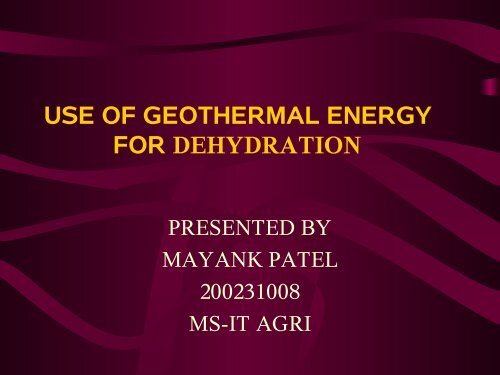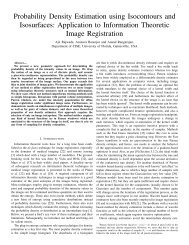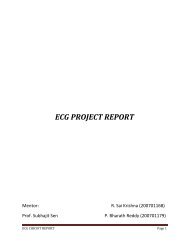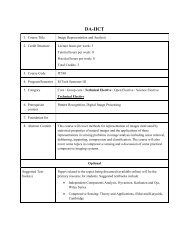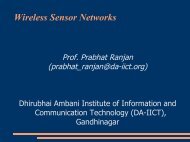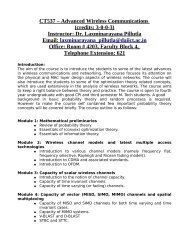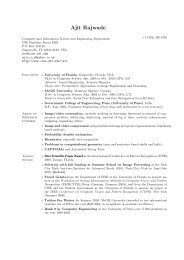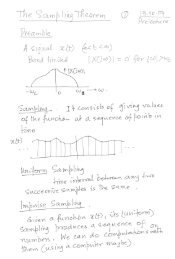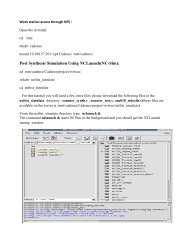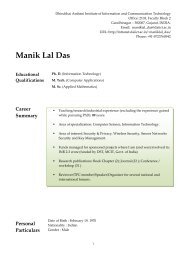200231008 - DAIICT Intranet
200231008 - DAIICT Intranet
200231008 - DAIICT Intranet
You also want an ePaper? Increase the reach of your titles
YUMPU automatically turns print PDFs into web optimized ePapers that Google loves.
USE OF GEOTHERMAL ENERGY<br />
FOR DEHYDRATION<br />
PRESENTED BY<br />
MAYANK PATEL<br />
<strong>200231008</strong><br />
MS-IT AGRI
Introduction<br />
• Indian geothermal provinces have the capacity<br />
to produce 10,600 MW of power- a figure<br />
which is five time greater than the combined<br />
power being produced from non-conventional<br />
energy sources such as wind, solar and<br />
biomass.
opportunities to develop geothermal<br />
energy resources<br />
• Industrial applications include food<br />
dehydration,laundries, gold mining,and milk<br />
pasteurization.<br />
• Dehydration of vegetables and fruits is the most<br />
common industrial use of geothermal energy<br />
•Dehydration required Temperatures range from86-<br />
356ºF.
Present status of energy<br />
resources in India<br />
• Renewable Power Potential<br />
Achieved<br />
• Wind Power 20,000 MW 1,000<br />
MW<br />
• Small Hydro Power 10,000 MW 172<br />
MW<br />
• Biomass 20,000 MW 141<br />
MW<br />
• Solar photo- voltaic Power 20 MW/sq.km 810<br />
KW<br />
• geothermal 10,600 MW 120<br />
KW
present status of food industry in<br />
India<br />
• India's food exports is about US$ 6 billion<br />
whereas the world total is about US$ 440<br />
billion.<br />
• India exported processed vegetables and<br />
fruits worth US$ 2 billion in 1999-2000.<br />
• Thus, India is one of the world's major food<br />
producers but accounts for less than 1.5<br />
percent of international food trade
use of geothermal energy<br />
for tomato drying<br />
• Dried fruits and vegetables can be<br />
produced by variety of processes.<br />
• geothermal energy maintain actual taste of<br />
dry product & color of product.
description of the tomato drying<br />
system<br />
• The complete tomato dehydration<br />
process can be divided into three stages:<br />
2. a pre-drying preparation step<br />
(pretreatment)<br />
3. the drying step<br />
4. the post drying treatment
drying system consists of the<br />
following main components<br />
• Finned-tube coil air-water heat<br />
exchanger.<br />
• Fan units.<br />
• Drying tunnel.<br />
• Measuring instruments.
Geothermal water is also used for industrial uses,<br />
like drying lumber or food products. This plant in<br />
Brady, Nevada, provides dried onions to Burger<br />
King.
onion and garlic dehydration plant
1. Fan<br />
2. Perforated steel belt<br />
3. Heat exchanger<br />
4. Upper air chamber<br />
5. Lower air chamber<br />
6. Exhaust<br />
7. Cleaning door<br />
8. Cleaning system
This is a "plate type" heat exchanger which passes hot<br />
geothermal water past many layers of metal plates,<br />
transferring the heat to normal water passing through<br />
the other side of each plate.
These pumps are used to pump the heated water to buildings<br />
this system, after it has passed through the heat exchanger.
eference<br />
www.geos.iitb.ac.in/geothermal India/geothermal_papers<br />
•Chandrasekharam, D. 1998. Potential geothermal<br />
• Geothermal Education Office . Hilary Drive<br />
(1997-2000 Geothermal Education )


